On a Thursday in early May I was approached by a man at Capitol Reef National Park in Utah asking me, “Did I see you at Bryce Canyon National Park on Wednesday or perhaps Zion National Park on Tuesday?”
“I was at both parks,” I replied.
“Which park did you like better?”
I thought for a few seconds and said, “Bryce Canyon!”
“Really? We liked Zion the best.”
Utah’s Fabulous Five
A common question, “Which park is your favorite?” awaits those who visit Utah’s Fabulous Five, a marketing name for the five National Parks of southern Utah.
Zion seemed to have a spiritual effect on the hikers I met who had ventured away from the main canyon filled with tourists and into the back country for a day or more.
I did not have that opportunity on either of my two day trips into Zion park.
Bryce Canyon National Park
Bryce Canyon had a profound effect on me with sparse visitors away from Bryce Canyon Amphitheater on a cold spring day when it was mostly in the 30s and light snow passed over the plateau in intermittent showers.
Pronghorns and snow showers, hoodoos and woods, made for moments of compacted time filled with a variety of memories.
I felt stone soul on my day in Bryce Canyon National Park.
I touched the ancient bristlecone pine tree, the red sandstone legends, the tiny white spherical snowballs falling dryly from the sky, and walked beneath the gray forests, on top of the dusty red sands and through the spring green grasses.
Bryce Canyon was many ecosystems and weather systems crammed into a few short hours on a high Utah plateau. Clear, thin air filled me.
The surprising aspect of Bryce Canyon National Park is its elevation at 8,000 to 9,200 feet on the eastern side of the Paunsaugunt Plateau. The approach from Highway 63 travels south 20 miles into Bryce Canyon National Park along the plateau and ending at Rainbow Point parking lot (9,200 feet) near the southern edge of the plateau.
Bryce Canyon amphitheater offers the largest amphitheater in the park extending 12 miles by 3 miles by 800 feet deep and is only a couple miles from the park entrance visitor center.
The walkway from Bryce Canyon Lodge is about 200 yards to Bryce Canyon amphitheater rim where a paved path along the edge allows great photography points.
Viewpoints and benches along the paved path are situated around the rim of Bryce Canyon amphitheater in places called Sunrise Point and Sunset Point.
Hoodoos fill the Bryce Canyon amphitheater. Hoodoo rock formations consist of eroded sandstone towers and walls that weather at different rates. This erosional pattern results in arches and windows in the rock and shapes that are often thicker stone sitting on thinner towers of rock.
Pathway to hoodoos in Bryce Canyon amphitheater.
The Rim Road offers about 20 miles of viewpoints for hoodoos from Bryce Canyon to Rainbow Point at the end of the plateau.
Some of the hoodoos are 150 feet tall. The current sandstone shapes will erode further by rain and wind. Arches and windows will collapse over time.
Snow-covered Aquarius Plateau in the distance is more than 2,000 feet higher than Bryce Canyon plateau.
Large Bryce Canyon amphitheater has hiking trails for getting nearer hoodoos.
The sandstone hoodoos here are enchanting with changing colors in the sunlight and clouds. Many sandstone hoodoos have the appearance of human form or perhaps I am too animistic in my viewpoint.
The imagery of rock and sand and sky makes for a place to feel the geological magic around you. Have a picnic by the rim or hike closer to the stone souls resting below the crowds.
This is a place to marvel at the wonders of today before they change with time.


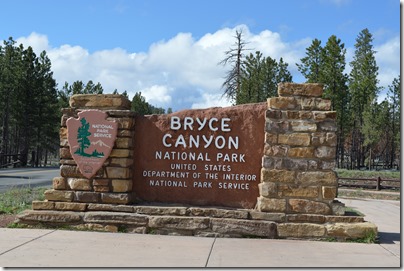
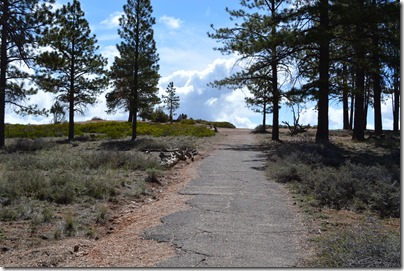
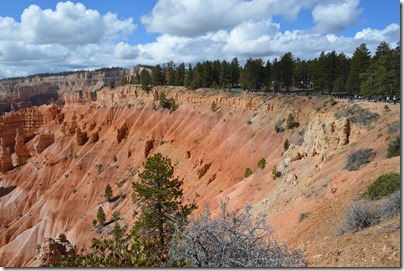
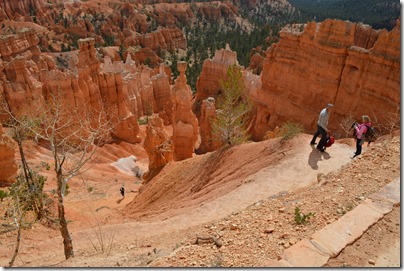
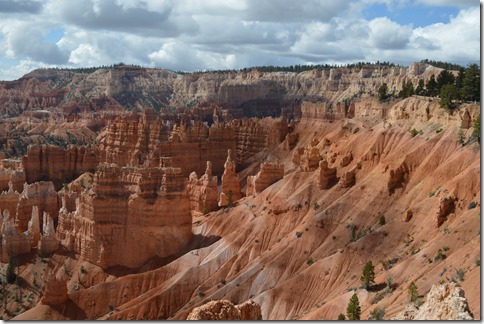
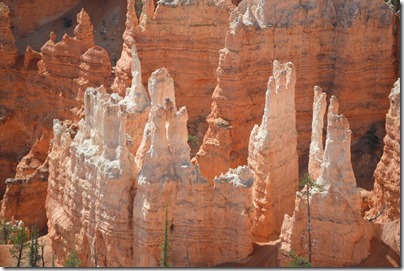
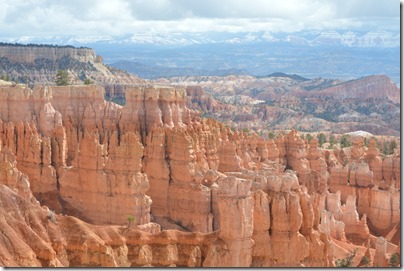
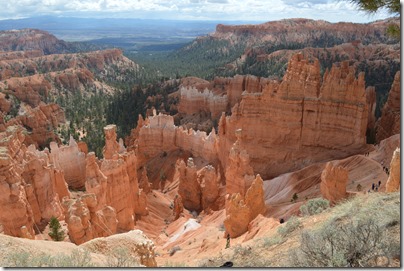
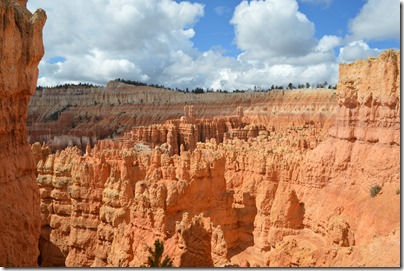

4 Comments
Comments are closed.